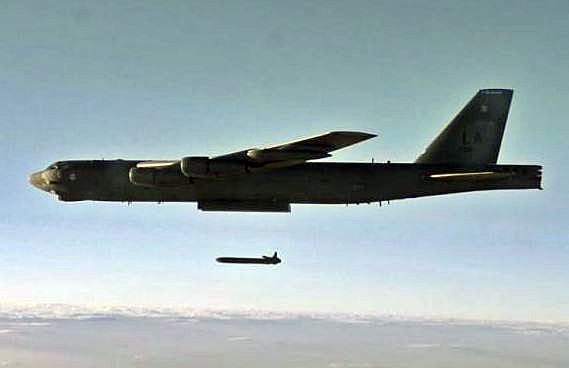The six decades-old Boeing B-52 Stratofortress strategic bomber of the U.S. Air Force is being upgraded to carry AGM-86B air launched cruise missiles (ALCMs) armed with nuclear warheads and will remain a threat to both China and Russia for the next 20 years.
The B-52 has been an integral part of the U.S. nuclear triad since the 1950s when it was equipped to drop nuclear bombs. Today, that capability has been upgraded so the B-52H, the current version of the bomber in service with the USAF, can launch nuclear tipped ALCMs
In a recent test over the Utah Test and Training Range, a B-52H bomber dropped three AGM-86B ALCMs in three separate sorties, demonstrating the USAF bombing forces' ability to configure, load, fly and deliver the weapon.
"It (the ACLM) provides a clear, visible and tailorable deterrent effect, and denies geographic sanctuaries to potential adversaries," said the Air Force.
A B-52H can carry 20 ALCMs: six on each of its two externally-mounted pylons and eight internally on a rotary launcher.
The Air Force is developing a Long Range Stand Off (LRSO) weapon to replace the AGM-68 and plans to deploy this new and stealthy missile by 2030.
"The LRSO will be a critical element of the United States' nuclear deterrence strategy, but we must continue to support the ALCM program until it is fielded and these recent tests are clear indicators of the ALCM's effectiveness and reliability," said Maj. Gen. Scott Jansson, commander and Air Force program executive officer for Strategic Systems, which is part of the Air Force Global Strike Command's Nuclear Weapon System Evaluation Program.
The B-52 has been in active service with the USAF since 1955. As of 2012, 85 were in active service with nine in reserve. The B-52 completed 60 years of continuous service in 2015. After being upgraded between 2013 and 2015, it is expected to serve into the 2040s.



























